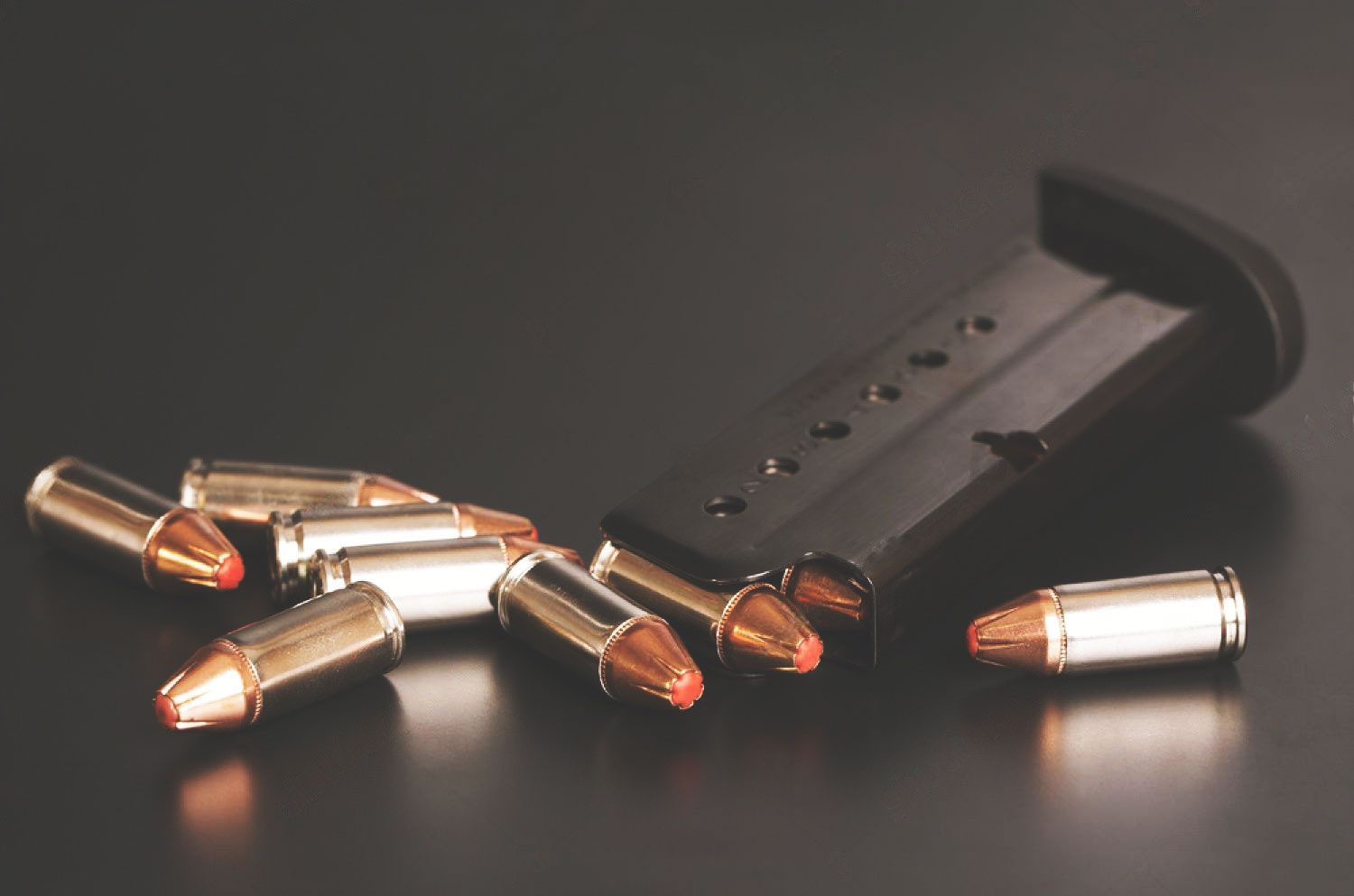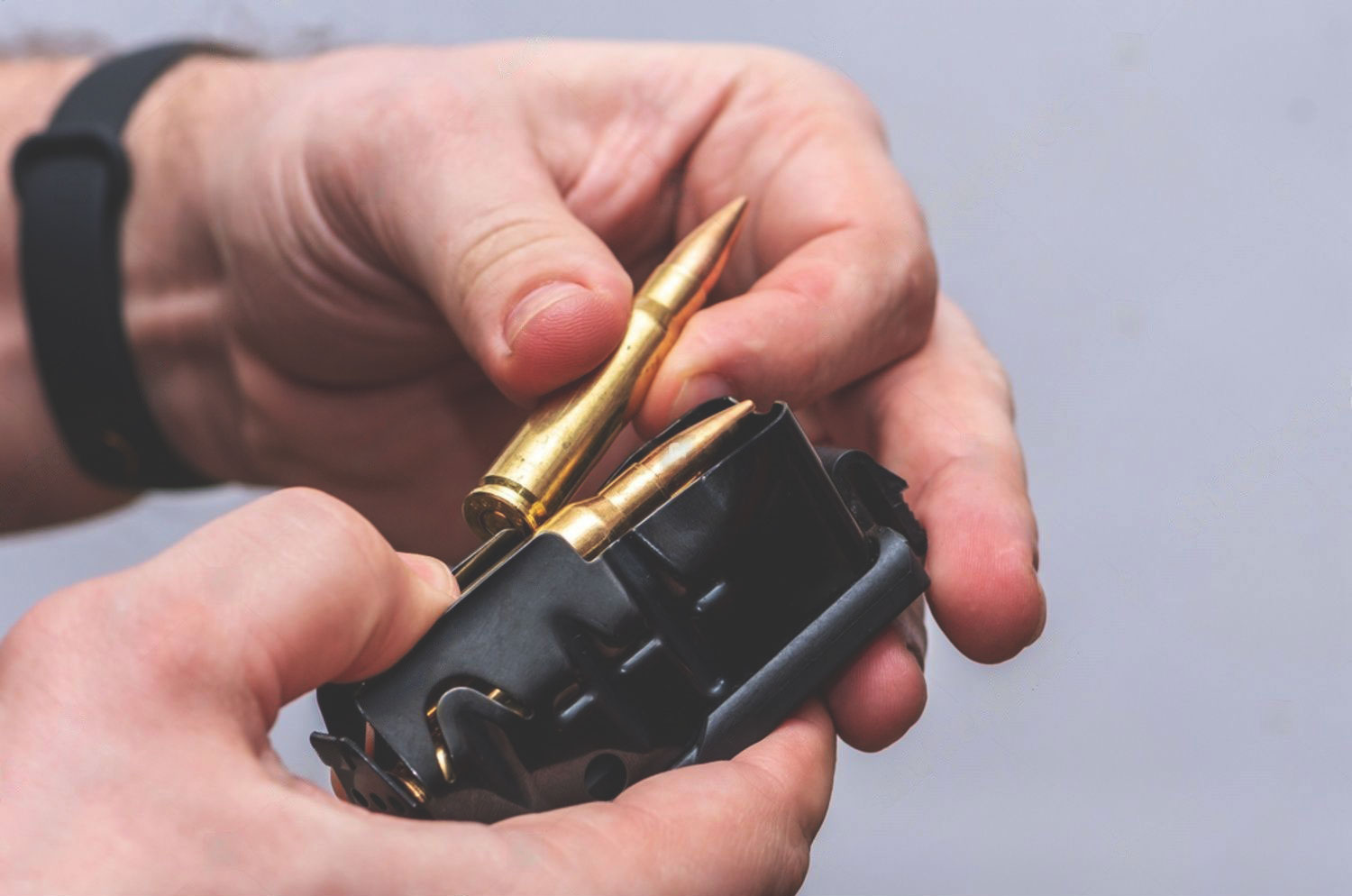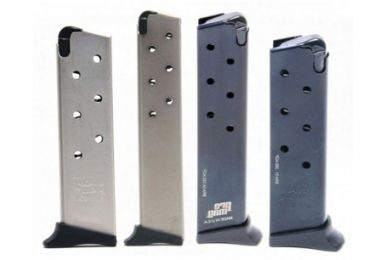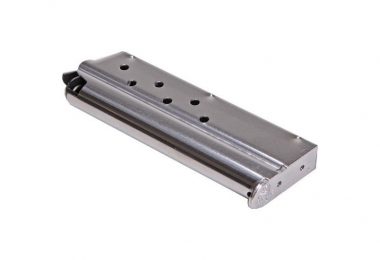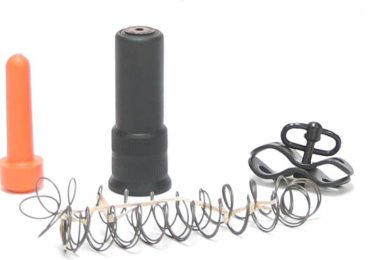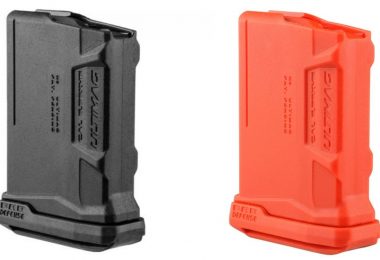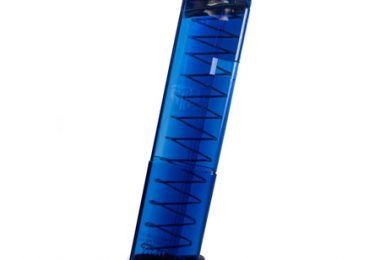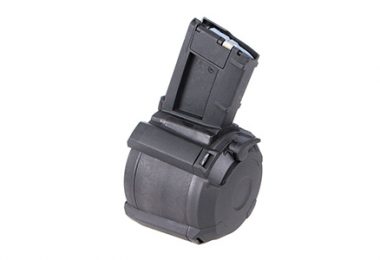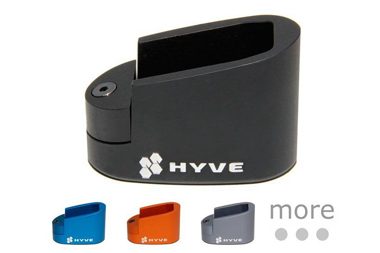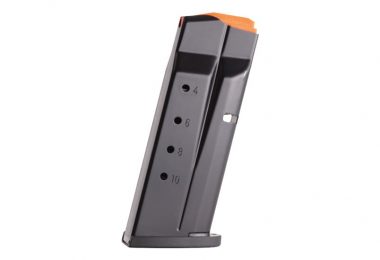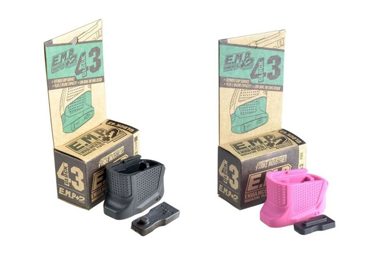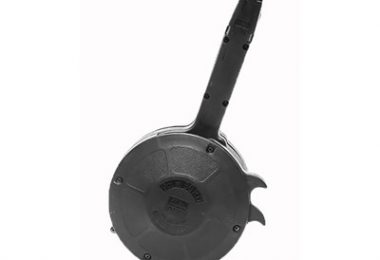Gun Magazines
A gun magazine is a device that holds rounds of ammunition for a firearm. It is usually a metal box or cylinder, with a spring-loaded follower that moves rounds of ammunition up into the firearm as they are fired. A gun magazine can be attached to the firearm or removable. Some firearms, such as the Browning Hi-Power and M1911A1, use detachable magazines that can be quickly replaced by the user. Other firearms, such as the Lee-Enfield and Mosin-Nagant, use fixed magazines, which cannot be removed by the user.
A gun magazine has a few basic parts: the body, the spring, the follower, and the baseplate. The body of the magazine is typically made from steel or aluminum, with the spring being made from steel or chrome-silicone. The follower is usually made from plastic, and the baseplate is typically made from steel or aluminum.
The capacity of a gun magazine is typically measured in rounds. A standard pistol magazine, for example, typically holds between six and eighteen rounds. A rifle magazine can hold anywhere from five to sixty rounds, depending on the type of firearm. Some drum magazines can hold hundreds of rounds.
Gun magazines must be designed specifically for thecu type of firearm they will be used with. A magazine designed for a particular make and model of firearm will not usually work with another type of firearm. This is because the dimensions of the magazine well, the shape of the feed lips, and the internal spring tension are all specific to the make and model of the firearm.
Gun magazines are subject to wear and tear, and will eventually need to be replaced. The springs in particular can weaken over time, causing the magazine to malfunction. It is important to regularly inspect gun magazines and replace them when they start to show signs of wear.
Most firearms use detachable magazines, which allows the shooter to quickly reload the gun by swapping out the empty magazine for a full one. Fixed magazines are less common, but are often seen on rifles and shotguns. Some guns, like revolvers, do not use magazines at all and instead have a cylinder that holds the ammunition.
Some states have laws that limit the capacity of detachable magazines, but these laws vary from state to state. It is important to check the local laws before purchasing or using a gun magazine.
While most gun magazines are designed to work with a specific type of firearm, some aftermarket options can be used with multiple types of guns. For example, certain AR-15 magazines can also be used with the AK-47 rifle. It is important to check compatibility before using any aftermarket magazines.
Gun magazines are an essential part of owning and operating a firearm. Understanding the different types of magazines and their capacities is important for choosing the right magazine for your needs. It is also important to be familiar with the laws in your state regarding magazine capacity limits. With this knowledge, you can ensure that you are using your gun safely and legally.
Types of Magazines
There are a few different types of gun magazines:
- Detachable magazines: These are the most common type of magazine, and they can be removed from the gun without any tools. They usually hold between 5 and 30 rounds, depending on the gun.
- Fixed magazines: These magazines are permanently attached to the gun, and they usually hold between 10 and 30 rounds.
- Drum magazines: These magazines hold anywhere from 50 to 100 rounds, and they're typically used for shotguns or submachine guns.
- Belted magazines: These magazines are similar to drum magazines, but they have a belt of ammunition that feeds into the gun. They're typically used for machine guns.
When choosing a gun magazine, it's important to consider the type of gun you have and how many rounds you want to be able to shoot before needing to reload. There are also a few other factors to keep in mind, such as the magazine's capacity, its material, and its compatibility with your gun.
Capacity
The capacity of a gun magazine is the number of rounds it can hold. Detachable magazines are available in a wide range of capacities, from 5 rounds up to 100 rounds. fixed magazines typically have a capacity of 10 to 30 rounds.
Different magazine capacities are available for different firearms. A higher-capacity magazine will hold more rounds of ammunition than a lower-capacity magazine. Some firearms, such as the AR-15, are available with a variety of different magazine capacities.
The most common magazine capacities are:
- Pistol magazines: 6 rounds, 7 rounds, 8 rounds, 10 rounds, 12 rounds, 13 rounds, 15 rounds, 17 rounds, 18 rounds
- Rifle magazines: 5 rounds, 10 rounds, 20 rounds, 30 rounds
- Carbine magazines: 4 round internal box magazine, 5 round internal box magazine, 7 round internal box magazine
- AK magazines: 30 rounds, 40 rounds, 60 rounds
- M&P magazines: 10 rounds, 15 rounds, 17 rounds, 20 rounds
- Glock magazines: 6 rounds, 7 rounds, 8 rounds, 9 rounds, 10 rounds, 11 rounds, 12 rounds, 13 rounds, 14 rounds, 15 rounds, 17 rounds, 19 rounds, 20 rounds, 21 rounds, 22 rounds
- Drum magazines: 100 rounds, 120 rounds
- AR magazines: 5 round internal box magazine, 7 round internal box magazine, 10 round internal box magazine
The capacity of a magazine is typically dependent on the size of the firearm it is designed for. For example, a high-capacity magazine for a 9mm pistol will hold more rounds than a high-capacity magazine for a .22 caliber pistol.
Material
Gun magazines are typically made from metal, plastic, or a combination of both. Metal magazines are typically more durable, but they can also be heavier and more expensive. Plastic magazines are usually lighter and cheaper, but they're not as durable as metal magazines.
The majority of gun magazines are made from steel or aluminum. Some, however, are made from polymer. Polymer magazines are typically lighter in weight than their metal counterparts and are often less expensive.
Compatibility
It's important to make sure that the magazine you choose is compatible with your gun. Most magazines are designed for specific types of guns, so it's important to check that the magazine will fit your gun before you buy it.
Drum magazines are a type of high-capacity magazine typically used with shotguns or submachine guns. Detachable magazines are the most common type of magazine, and they come in a wide range of capacities. Fixed magazines are permanently attached to the gun, and they typically have a capacity of 10 to 30 rounds. Belted magazines are similar to drum magazines, but they have a belt of ammunition that feeds into the gun.
Most gun magazines are rectangular, but some are curved. Curved magazines are typically used in firearms that have a magazine that is integrated into the grip, such as the Glock 19.
Gun magazines can be removable or fixed. Removable magazines can be taken out of the firearm and replaced with a new ones. Fixed magazines are not designed to be removed and are often integral to the firearm.
Gun magazines typically have a spring inside of them that pushes the rounds of ammunition up so that they can be fed into the chamber of the firearm. The spring is under pressure and therefore needs to be replaced every few thousand rounds or so.
Some gun magazines have a follower that helps to keep the rounds of ammunition in place and prevents them from nose-diving into the magazine. Followers are often made from polymer and are usually color-coded so that you can easily see when the magazine is full.
Magazines can be bought pre-loaded with ammunition or they can be loaded by the user. Pre-loaded magazines are convenient, but they are typically more expensive than those that are loaded by the user. When loading a magazine, it is important to make sure that the rounds are seated correctly and that the spring is not over-compressed. If the spring is over-compressed, it can cause problems with feeding the rounds into the chamber of the firearm.
Magazines can be stored loaded or unloaded. When storing a magazine that is loaded, it is important to make sure that the magazine is not left under tension for an extended period as this can damage the spring.
Cleaning Your Pistol Magazine
Magazines should be cleaned regularly to prevent dirt and debris from building up. A dirty magazine can cause jams and misfires.
To clean a magazine, first, remove all of the rounds of ammunition. Next, disassemble the magazine if possible and remove the follower and spring. These parts can then be cleaned with a gun cleaning solvent. Once the follower and spring have been removed, the magazine can be cleaned with a gun cleaning brush. Be sure to pay special attention to the feed lips as these are what ensure that the rounds are fed into the chamber correctly. After the magazine has been cleaned, it should be reassembled and then loaded with ammunition. It is important to test the magazine before using it to make sure that it is functioning correctly.
Gun magazines are an essential part of any firearm and should be given the care and attention that they deserve. By following the above steps, you can ensure that your magazines are always in good working order.
Benefits of Gun Magazines
There are many benefits to using gun magazines. Some of the most important benefits include:
- Increased accuracy - When shooting with a magazine, you will be able to fire more accurately because the gun will not move around as much. This is because the weight of the magazine helps to keep the gun in place.
- More firepower - A magazine will also give you increased firepower, allowing you to shoot more rounds without having to reload.
- Faster reloads - Magazines also help with quick reloads, which can be crucial in a firefight.
So overall, there are many benefits to using gun magazines, which is why they are such an important part of any shooter's arsenal.
Pistol magazines, for example, are typically smaller and hold fewer rounds than rifle magazines. They are also often made of a different material, such as plastic or metal, to withstand the recoil of the pistol. Rifle magazines, on the other hand, are typically larger and can hold more rounds than pistol magazines. They are also often made of metal to withstand the greater force of the rifle's recoil.
Carbine magazines share some features with rifle magazines, such as their size and material, but they typically hold fewer rounds than rifle magazines. Ak magazines are similar in size to carbine magazines but typically hold more rounds. M&P magazines are similar in size to Ak magazines but typically hold fewer rounds. Glock magazines are similar in size to M&P magazines but typically hold more rounds. Drum Magazines are larger than all of the other types of gun magazines and can hold the most rounds. AR Magazines are also larger than most gun magazines and can hold a large number of rounds.
Gun magazines come in all shapes and sizes and can be made from a variety of materials. They are an important part of any gun owner's equipment and should be chosen carefully to ensure that they meet the needs of the individual shooter. Whether you're looking for a pistol magazine, rifle magazine, or carbine magazine, we've got you covered. We also carry Ak magazines, M&P magazines, Glock magazines, drum magazines, and AR magazines - so no matter what type of firearm you own, we have the perfect magazine for you. Make sure to check out our selection today!

